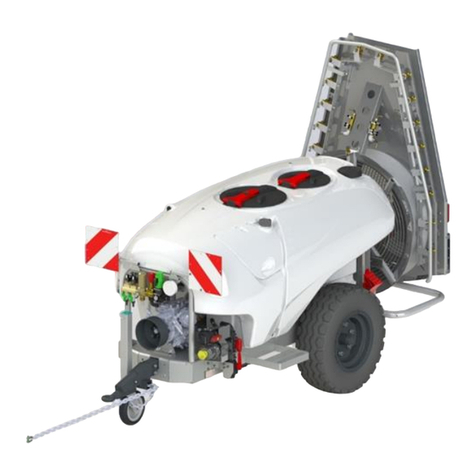9.1 RESERVOIR .............................................................................................................................................................. 22
9.2 TANK COVER........................................................................................................................................................... 23
9.3 ABLUTION RESERVOIR........................................................................................................................................ 23
9.4 RESERVOIR FOR WASHING OF HANDS........................................................................................................... 23
9.5 MIXING NOZZLE..................................................................................................................................................... 24
9.6 THREE-WAY VALVE –EJECTOR (only AGP 1000 PE).................................................................................... 24
9.7 SUCTION FILTER.................................................................................................................................................... 25
9.8 NOZZLE FOR CLEANING the main tank interior............................................................................................... 25
9.9. ADJUSTABLE AXLE................................................................................................................................................ 26
9.10 BLOWER.................................................................................................................................................................... 26
9.11 FAN WITH ADJUSTABLE VANES........................................................................................................................ 27
9.12 NOZZLE BRACKETS .............................................................................................................................................. 28
10 VALVE ADJUSTMENTS.............................................................................................................. 29
10.1 MIST BLOWER AGP 1000 PE................................................................................................................................. 29
10.2 MIST BLOWER AGP 1000 EN, AGP 1500 EN, AGP 2000 EN ............................................................................ 30
11OPTIONAL EQUIPMENT............................................................................................................ 31
11.1 SURFACE CLEANING SET .................................................................................................................................... 31
11.2 STRAINER FLUSHER.............................................................................................................................................. 32
11.3 PACKAGING AND STRAINER FLUSHER .......................................................................................................... 32
11.4 SUCTION BASKET WITH SUCTION TUBE........................................................................................................ 33
11.5 LONG RANGE SPRAYING NOZZLE BRACKET............................................................................................... 34
11.6 ADJUSTABLE NOZZLE DEFLECTOR ................................................................................................................ 34
11.7 TERRACE SPRAYING KIT .................................................................................................................................... 35
11.8 SIGNAL LIGHTS ...................................................................................................................................................... 35
12PRESSURE REGULATOR............................................................................................................ 36
12.1 PRESSURE REGULATOR M170........................................................................................................................... 36
12.2 PRESSURE REGULATOR PR8.............................................................................................................................. 36
12.3 PR9 PRESSURE REGULATOR .............................................................................................................................. 37
12.4 REGULATOR LABELLING.................................................................................................................................... 38
12.5 MAIN COMPONENTS OF THE PRESSURE REGULATOR ............................................................................. 38
12.6 REGULATOR OPERATION ADJUSTMENT....................................................................................................... 41
12.7 PRESSURE REGULATOR MAINTENANCE....................................................................................................... 42
13 PUMP ............................................................................................................................................... 42
13.1 CHECK BEFORE USING THE APPLIANCE....................................................................................................... 42
13.2 USE.............................................................................................................................................................................. 43
13.3 AFTER USE................................................................................................................................................................ 43
13.4 TECHNICAL DATA.................................................................................................................................................. 43
13.5 PUMP MAINTENANCE........................................................................................................................................... 43
14 CLEANING THE MACHINE....................................................................................................... 45
15 MAINTENANCE AND STORAGE AFTER SPRAYING SEASON......................................... 46
15.1 TUBES .......................................................................................................................................................................... 46





























